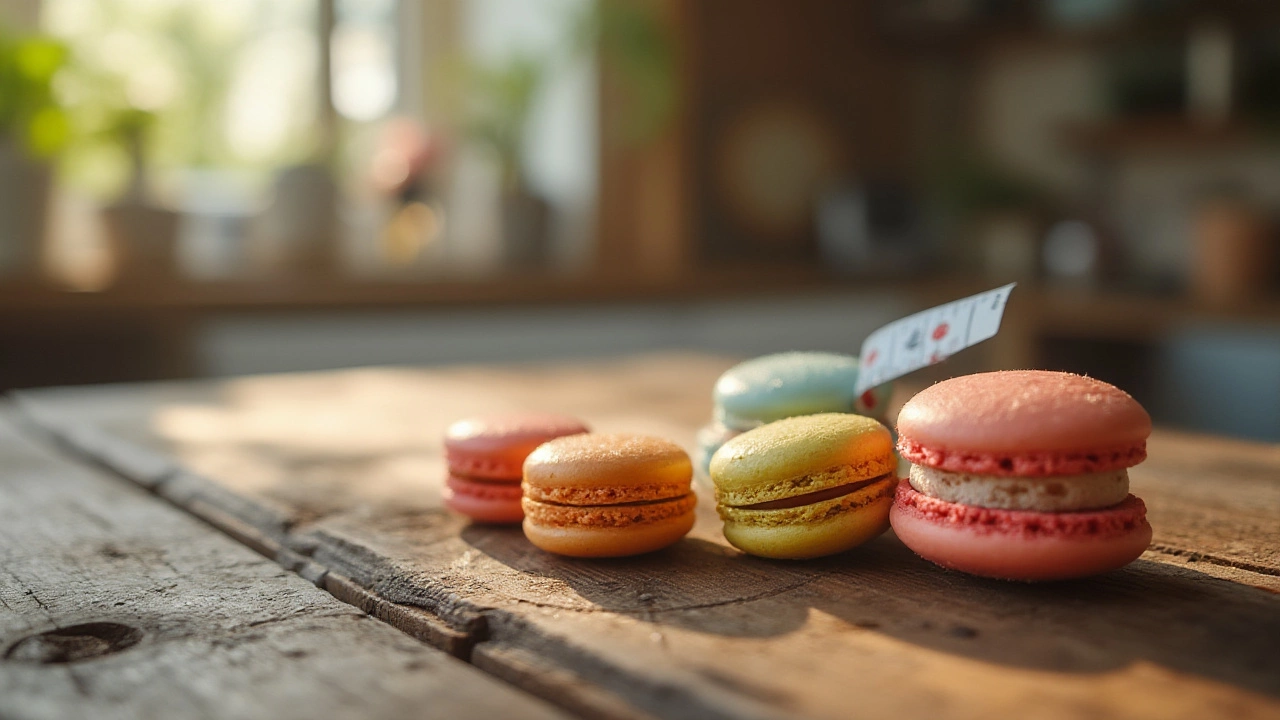
Macaron Size Guide: Discovering the Perfect Macaron Diameter for Baking and Serving
Find out the ideal macaron size, how it affects taste and texture, why classic diameters matter, and get practical baking tips for macarons at home or in bakeries.
If you’ve ever wondered why some macarons turn out too flat or too thick, the answer often lies in the diameter you aim for. The right size gives you a smooth shell, a creamy interior, and a professional look without extra work.
Most bakers target a 2‑inch (about 5 cm) diameter for classic French macarons. This size fits nicely on a cake base, looks good on a platter, and bakes evenly. Anything smaller tends to be delicate and may crack, while larger shells need longer baking time and can become dry.
The diameter decides how the batter spreads, how the shell dries, and how the filling holds. A 2‑inch shell spreads just enough to form a crisp top and a soft foot. If the shell is too big, the foot may stay soft and the top can become overly crisp, making the macaron feel hard when you bite it.
When you bake for a special occasion, think about the final look. Tiny 1‑inch macarons are great for cupcakes or as decorative accents, but they require a finer piping tip and a careful oven temperature. Bigger 2½‑inch shells look impressive on a dessert table but need a slower bake to keep the interior from over‑cooking.
1. Use a consistent piping tip. A ½‑inch round tip works well for the classic 2‑inch size. Switching to a ¼‑inch tip will give you smaller shells, while a larger ¾‑inch tip helps create bigger ones.
2. Measure with a ruler. After piping, let the shells rest until a skin forms, then gently touch one with a ruler. If it’s not close to 5 cm, adjust the pipe height or batter consistency for the next batch.
3. Watch the oven. Larger shells need a lower temperature (around 285°F/140°C) and a few extra minutes. Smaller shells can handle a slightly higher heat (300°F/149°C) for a shorter time.
4. Adjust batter thickness. If the batter spreads too much, add a bit more almond flour. If it’s too thick and won’t spread, sift in a little extra powdered sugar.
5. Practice with a test sheet. Pipe a few shells, bake, and see how they turn out before committing to a full tray. This saves time and ingredients.
For those building big displays, check out our post “How Many Macarons Fit in a 5‑Tier Tower? Ultimate Guide for Bakery Lovers” – it shows how size choices affect the total count and stability of a tower.
If you’re curious about cost, “How Much Does a Hundred Macarons Cost? 2025 Macaron Pricing Guide” breaks down price differences between standard and oversized shells.
Remember, the best diameter is the one that fits your project and your oven. Start with the classic 2‑inch size, then experiment with smaller or larger shells as your confidence grows.
With these tips, you’ll stop guessing and start baking macarons that look and taste just right every time. Happy piping!"

Find out the ideal macaron size, how it affects taste and texture, why classic diameters matter, and get practical baking tips for macarons at home or in bakeries.